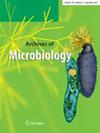Precise quantification of biofilm is critical as the formation and persistence of biofilm have significant implications in the environmental, therapeutic and industrial contexts. The microtiter plate assay using crystal violet with 33% glacial acetic acid or 94–100% ethanol as the resolubilising agent is widely used for the categorisation of biofilms into weak, moderate and strong categories. But, the use of varying wavelengths for the measurement of biofilm resulted in discrepancies in categorisation across the studies due to the difference in the extinction coefficient of CV. This study emphasises the importance of measuring the biofilm at the absorbance maximum (λmax) of resolubilized CV, identified as 585 nm for 33% acetic acid and 580 nm for 94–100% ethanol. To address the challenge of harmonizing the results across studies, a method was developed to adjust the biofilm categorisation threshold based on the extinction coefficient ratios of CV at different wavelengths enabling consistent classification regardless of the wavelength used. Validation with E. coli and S. aureus demonstrated that the adjusted thresholds produced results similar to that obtained with the λmax. This standardised approach not only enables the researchers to obtain accurate and consistent results in the future studies, but also facilitates the comparison of previously published data on biofilm research, which is essential for the exploration of newer therapeutic strategies against biofilm related infections.


